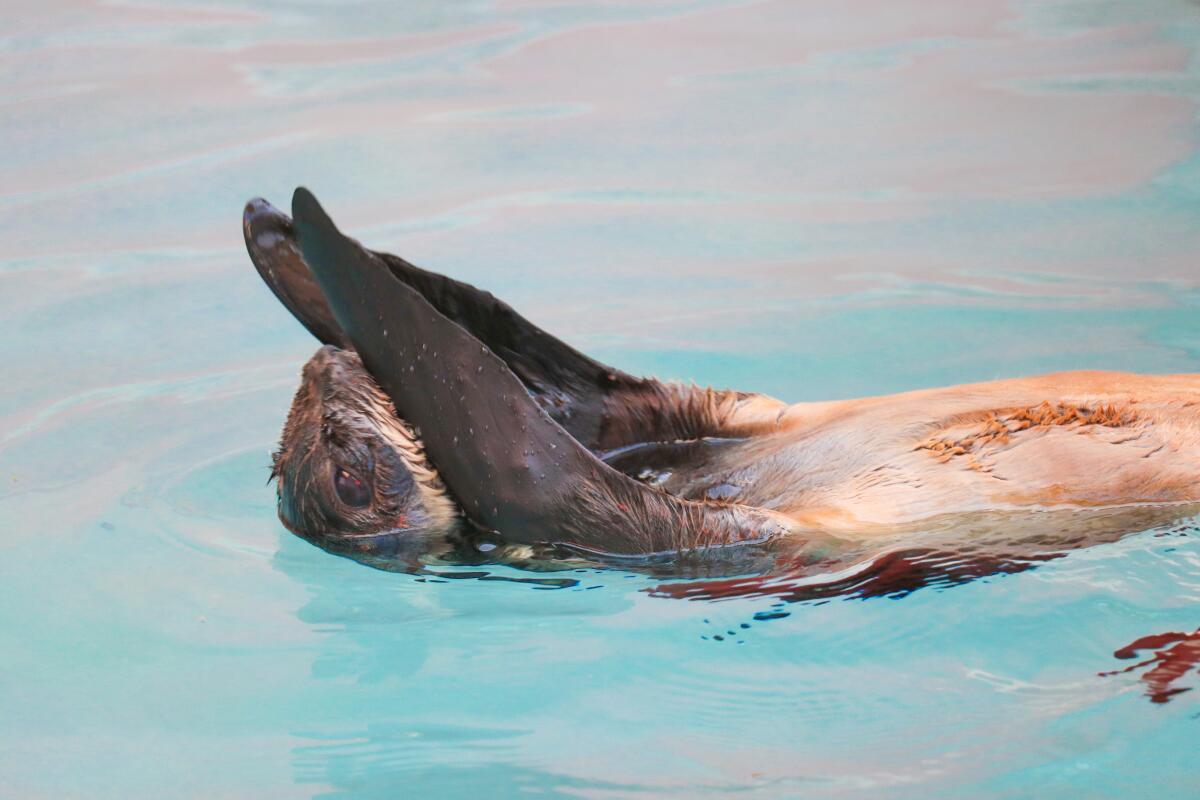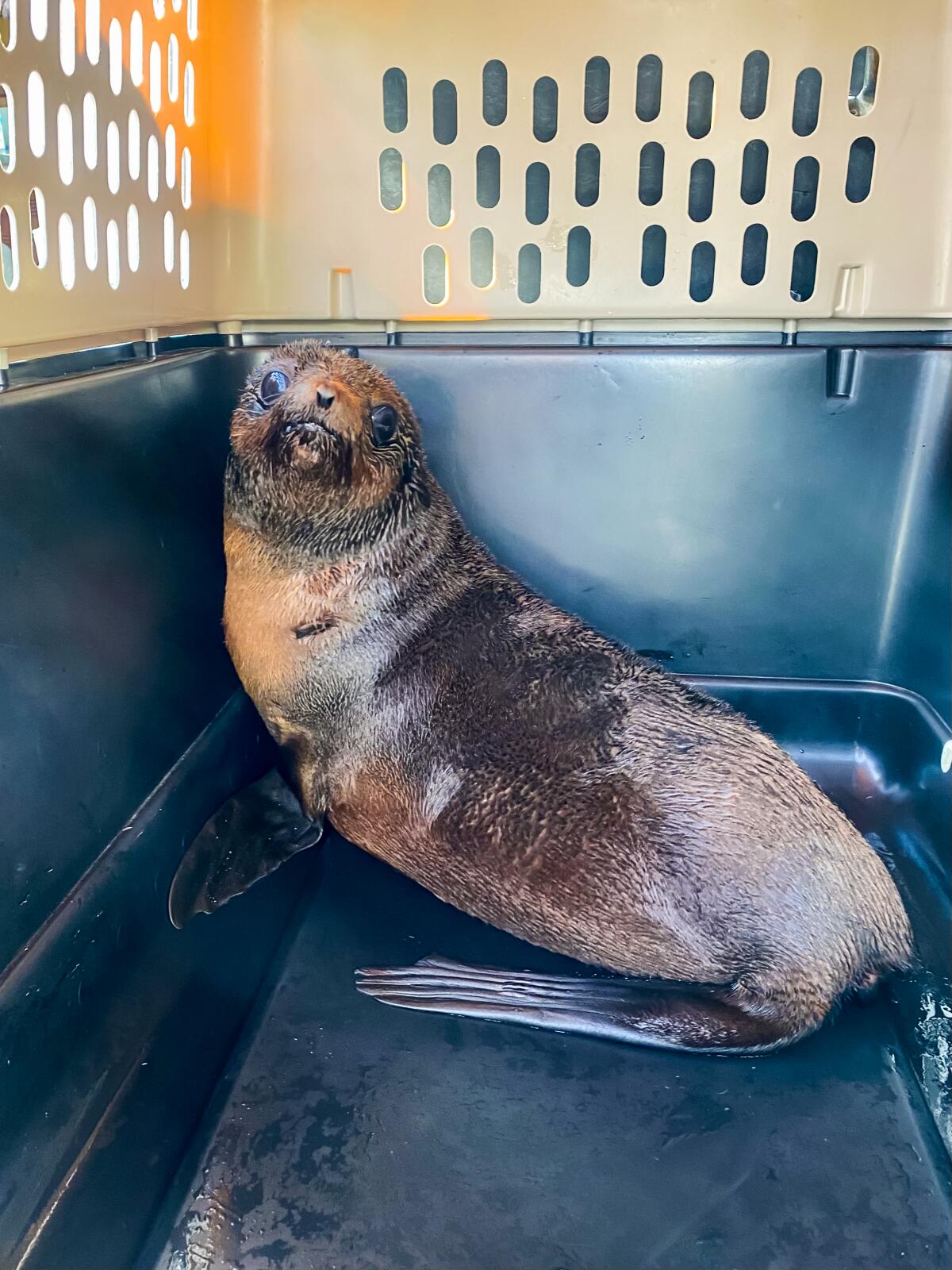Northern fur seal pup rehabilitated and released by Pacific Marine Mammal Center

- Share via
A northern fur seal pup rescued from Newport Beach pier last fall by the Pacific Marine Mammal Center was recently released back to the ocean, with hopes she returns to the Channel Islands where the nearest breeding colony is located.
Staff at the Laguna Beach-based rescue center were called out in October after the Newport Beach Public Works Department reported the beached pup. It came into the center severely malnourished and dehydrated, as most marine mammals get water from their food. Officials said the pup, also known as Sweet P, arrived with some lacerations, though it is unclear what caused the injuries.
Pacific Marine Mammal Center spokesman Kian Maleki said that at the time of her rescue, Sweet P was estimated to have been around 4 months old, based on approximations from general weaning periods and the species’ typical breeding season. Northern fur seals are typically born in June.
It is believed that Sweet P was weaned off too early.

“The closest breeding colony is the Channel Islands, and that’s 100 miles away. They don’t typically wash up here,” said Maleki, who added that it isn’t unheard of for northern fur seals to wash up on shore.
Sweet P is the first the center has seen in about five years, Maleki said.
California sea lions, elephant seals and harbor seals are more commonly cared for at the center. Roughly 20 sea lions are currently there, and around 150 to 200 animals pass through the hospital in a typical year. Years with unusual mortality events can bring that number as high as 500.
The typical rehabilitation process involves performing a physical and checking the animals for injuries and infections, clearing them of any issues and helping them gain back some of the weight they might have lost when they were injured.
The animals need to demonstrate motivation and interest in food and hunting before they can be released. Sweet P was released on Jan. 22.
“Northern fur seals are deep ocean [mammals]. Sea lions and harbor seals come ashore, but fur seals live most of their lives at sea and only come out to rookeries to breed,” Maleki said. “We took her out to the continental shelf about 2 miles out from Newport Beach. It’s a long way out from the Channel Islands, but … that’s where she would normally be and she’ll find her way to wherever.”

Maleki said there isn’t a common time frame for seal rescues, though pup rescues tend to coincide with breeding seasons.
Still, there are times throughout the year where animals of all ages come ashore with similar issues or injuries believed to be human-caused — plastic entanglement or ingestion or interactions with fishing operations, for example.
The next breeding season is expected to be for elephant seals, which Maleki said the center gets all year, but most tend to come in as pups. Breeding season for elephant seals is in the winter and pups tend to appear in the spring or early summer. A number of correlating factors like the weather, algal blooms and runoff — as is the case with the recent storms — will influence the number of elephant seals treated by the center this year.
All the latest on Orange County from Orange County.
Get our free TimesOC newsletter.
You may occasionally receive promotional content from the Daily Pilot.




